zeroair
Newly Enlightened
- Joined
- Aug 6, 2016
- Messages
- 130
I humbly submit this offering for consideration to the reviews section of this forum.
MechForce Tactical Suppressor Turbo Flashlight Review

Since my early days of talking to Mechforce about flashlights, they mentioned doing this 21700 light. I talked to them a bunch about it but more than anything, I think they took comments (including many of mine specifically) about the MechTorch to heart. They've just released this 21700 light, named the Tactical Suppressor – basically a [Hot Rod in the Turbo format] tube 21700 light. Read on for testing!
MechForce Tactical Suppressor Turbo Flashlight Review

Since my early days of talking to Mechforce about flashlights, they mentioned doing this 21700 light. I talked to them a bunch about it but more than anything, I think they took comments (including many of mine specifically) about the MechTorch to heart. They've just released this 21700 light, named the Tactical Suppressor – basically a [Hot Rod in the Turbo format] tube 21700 light. Read on for testing!
Versions
You can get this light in any color you want, so long as it's black. Aside from body colors, the Tactical Suppressor is available in two formats (just like the MechTorch), which differ only in the driver. The Tactical Suppressor Turbo (seen here), which has an h17f driver, and the Tactical Suppressor Lite, which has a fixed mode driver.
Price
The Turbo is $119.95, and the Lite is $99.95.
I'll say this up front: If you don't plan to change the driver on the Turbo (and why would you; h17f is fantastic) then it's very much worth the $20 difference for the light to come with it from the factory.
Short Review
It's what it claims to be. I love Mechforce's second effort, and I'm glad they completed their goal of making a 21700 light for a more tactical crowd. For that role, I think it's great. I even think it works as an EDC, if you're willing to reprogram the h17f. The temperature and tint of the chosen emitters is great, and overall, it's a great package.
Long Review
The Big Table
| mechforce-USA Tactical Suppressor Light, Turbo | |
|---|---|
| Emitter: | Nichia 219c (Neutral White) |
| Price in USD at publication time: | |
| Cell: | 1×21700 |
| Turbo Runtime | High Runtime |
| LVP? | Yes, 2.7V |
| Switch Type: | Mechanical |
| On-Board Charging? | No |
| Claimed Lumens (lm) | [no claim made] |
| Measured Lumens (at 30s) | 1641 |
| Claimed Throw (m) | [no claim made] |
| Candela (Calculated) in cd (at 30s) | 385lux @ 4.804m = 8885cd |
| Throw (Calculated) (m) | 188.5 |
| All my mechforce-USA reviews! |
What's Included

- Mechforce Tactical Suppressor Turbo
- Efest 5000mAh 21700 (unprotected)
- Mechforce tactical sticker






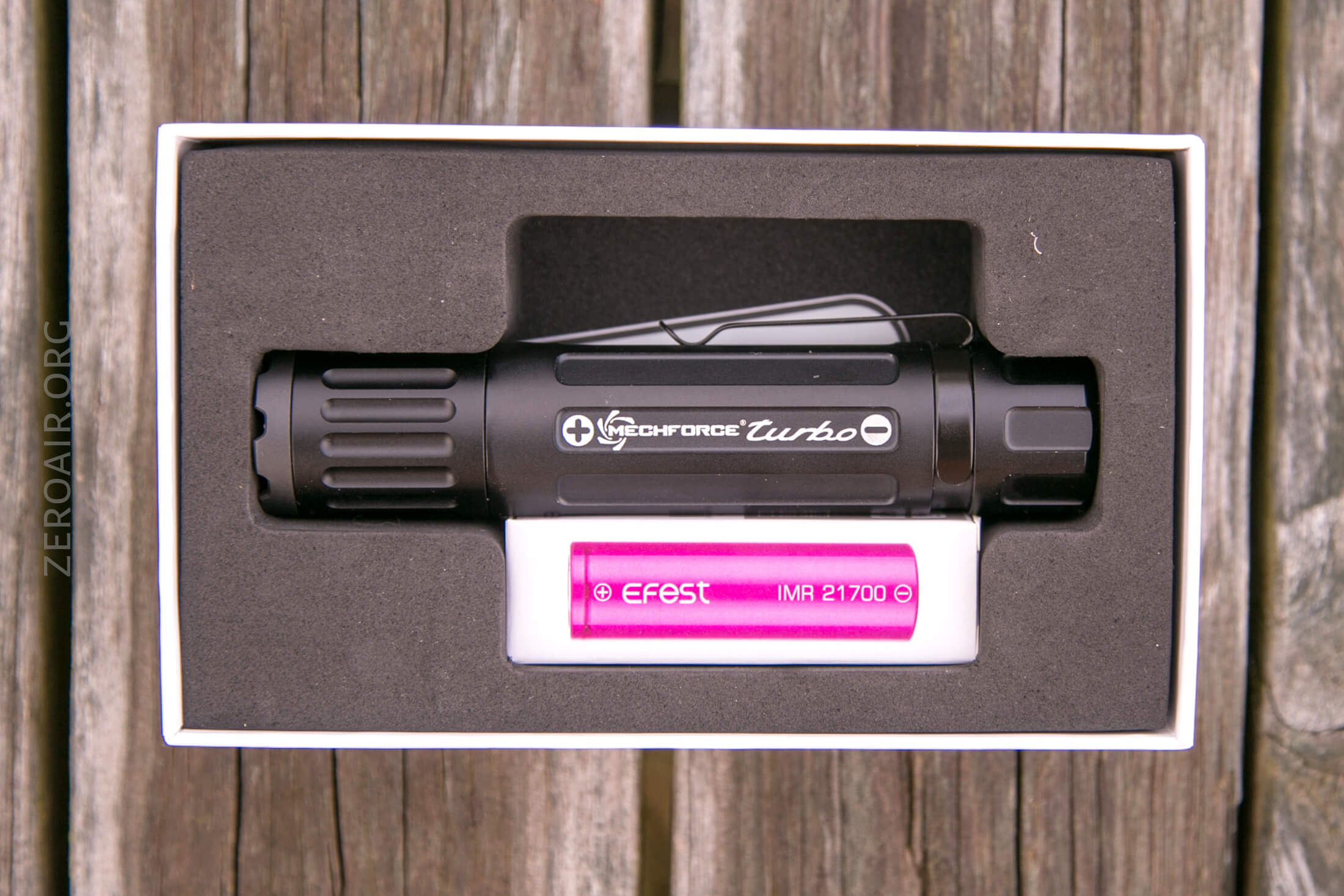
This foam really secures the light well.
Below is the manual. It covers the light pretty well, including programming which is no small feat. More on programming later.
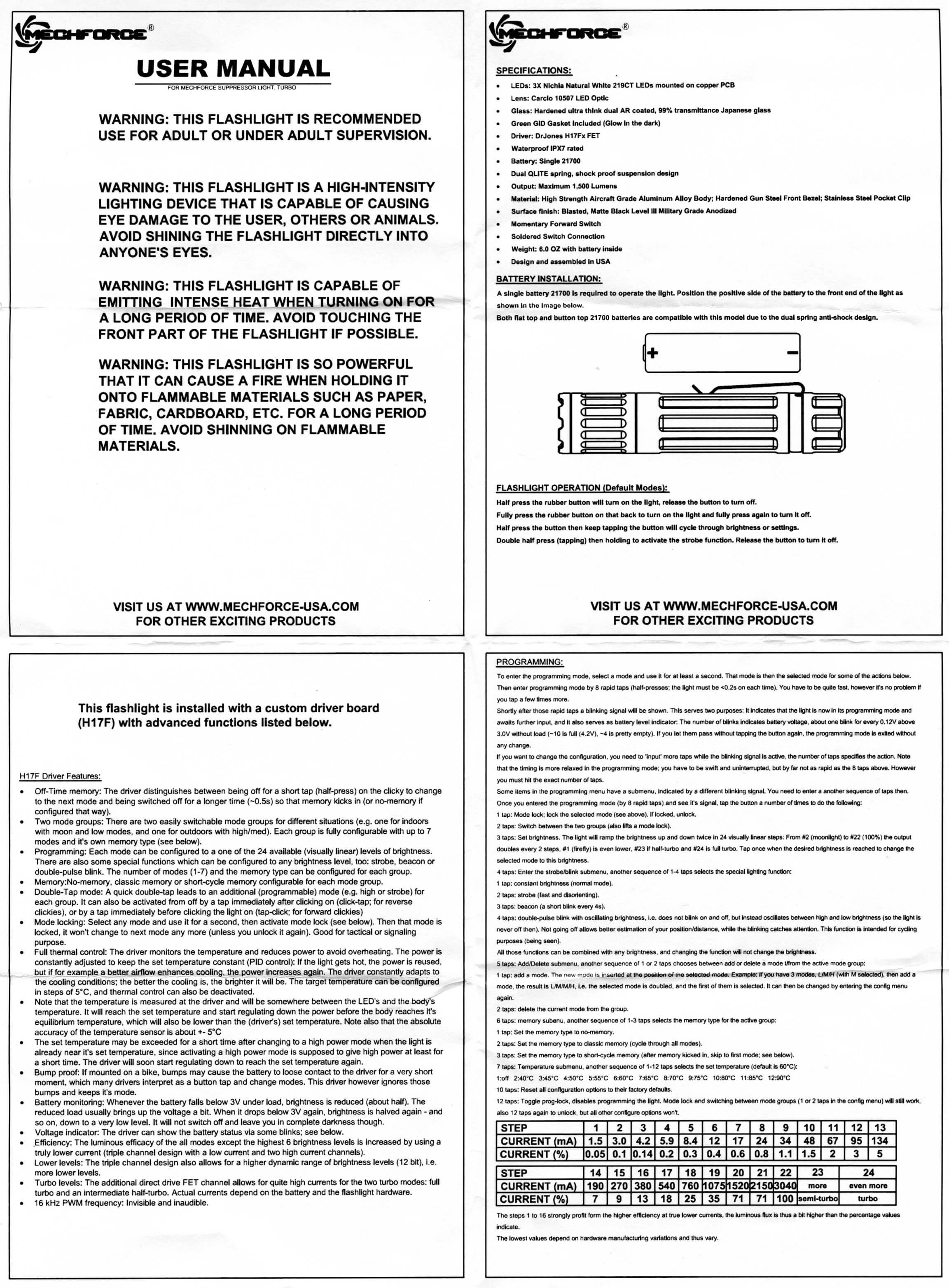
Build Quality and Disassembly

The Mechforce Turbo is well built. The anodizing feels great in hand.



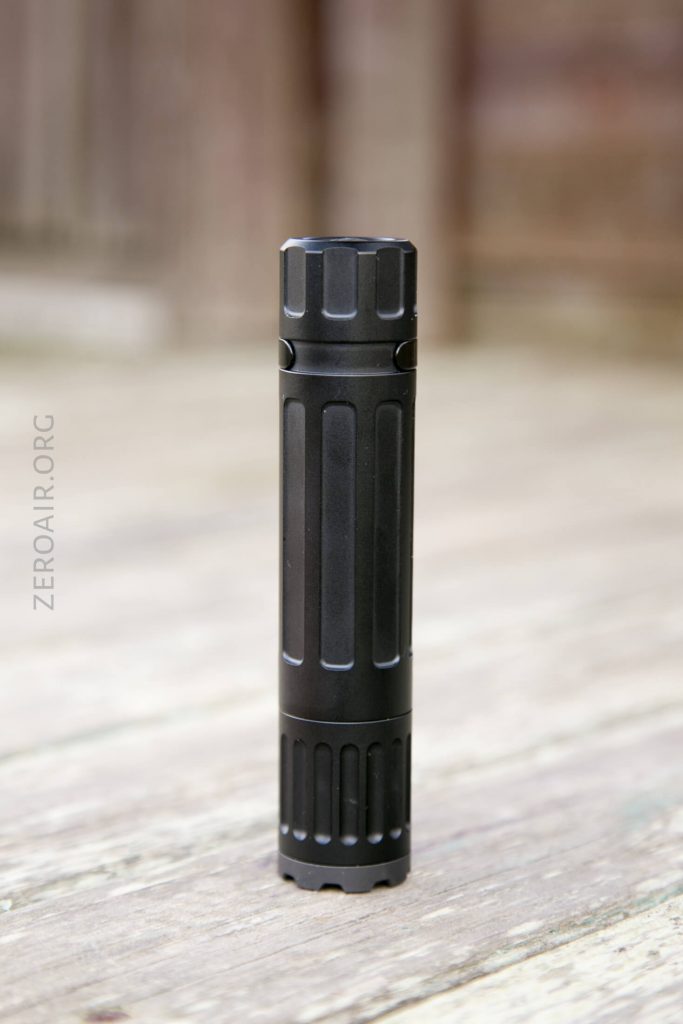
I have little experience where "little experience" = "none whatsoever" – with suppressors, but all my experience playing GoldenEye etc tells me that suppressors were a design goal for this light. That's neat but be aware that when using the light as a tactical suppressor, it's single use.

You might recognize that logo….

It's the Porsche Turbo logo.
The bezel is a different color – you probably noticed that already. It's not mentioned as a strike bezel, but it's surely one. I think it's steel, and seems very tough. This bezel answers one of my complaints about the light (which was echoed by others) – the MechTorch didn't let any light escape when headstanding. This bezel will, and it'll do it well. Though on Turbo you'll set your table on fire. Ask me how I know (spoiler I almost set my table on fire.)


And the tail end answers another comment I had about the Mechtorch – it wouldn't tailstand (just barely!) but the Tactical Suppressor will. The button is well recessed. I'm not sure that matches with a tactical ideal, though. The angle of attack must be fairly direct to get the switch activated – especially to click the switch.


This is as far as I got the light disassembled. As far as I can see, the cell holder is a one piece body. That surprised me. If you need or want to change out the switch or switch cover, you'll need the special tool Mechforce sells for removing their retaining rings.

Here are the guts. See the retaining rings – Mechforce sells a tool to fit that. Note the beefy spring on the tail, and the q-lite spring on the head.

The cell tube and head meet on unanodized threads. Mechanical lockout isn't really possible (nor is it needed since this light has a mechanical switch.)


Note how massively beefy those threads are, too. I don't love unanodized threads, but these are reasonable smooth and well lubed.

Unanodized makes for a more robust connection, which is something you want in a tactical light anyway.

Here you can see my go-to means for unscrewing the bezel. It didn't budge, even with this amount of effort. Can it be removed? Well certainly. Bring your strap wrench, though.


I don't know why I thought they might but I'll answer for you since I wondered; no parts of the MechTorch screw into the Tactical Suppressor.

One final thing to mention about these Mechforce lights build quality. They use fantastic glow material. It's so glowy.



I had a bit of fun.




Size and Comps
Metric: W 31mm x L 127mm x H 27mm
Note the 31mm is the diameter with the clip measured. Otherwise (body of the light) is just 27mm and some change. Length also is accurate, at 127mm and some change.



This isn't a small light! But it's 21700, with those good good mAh's.

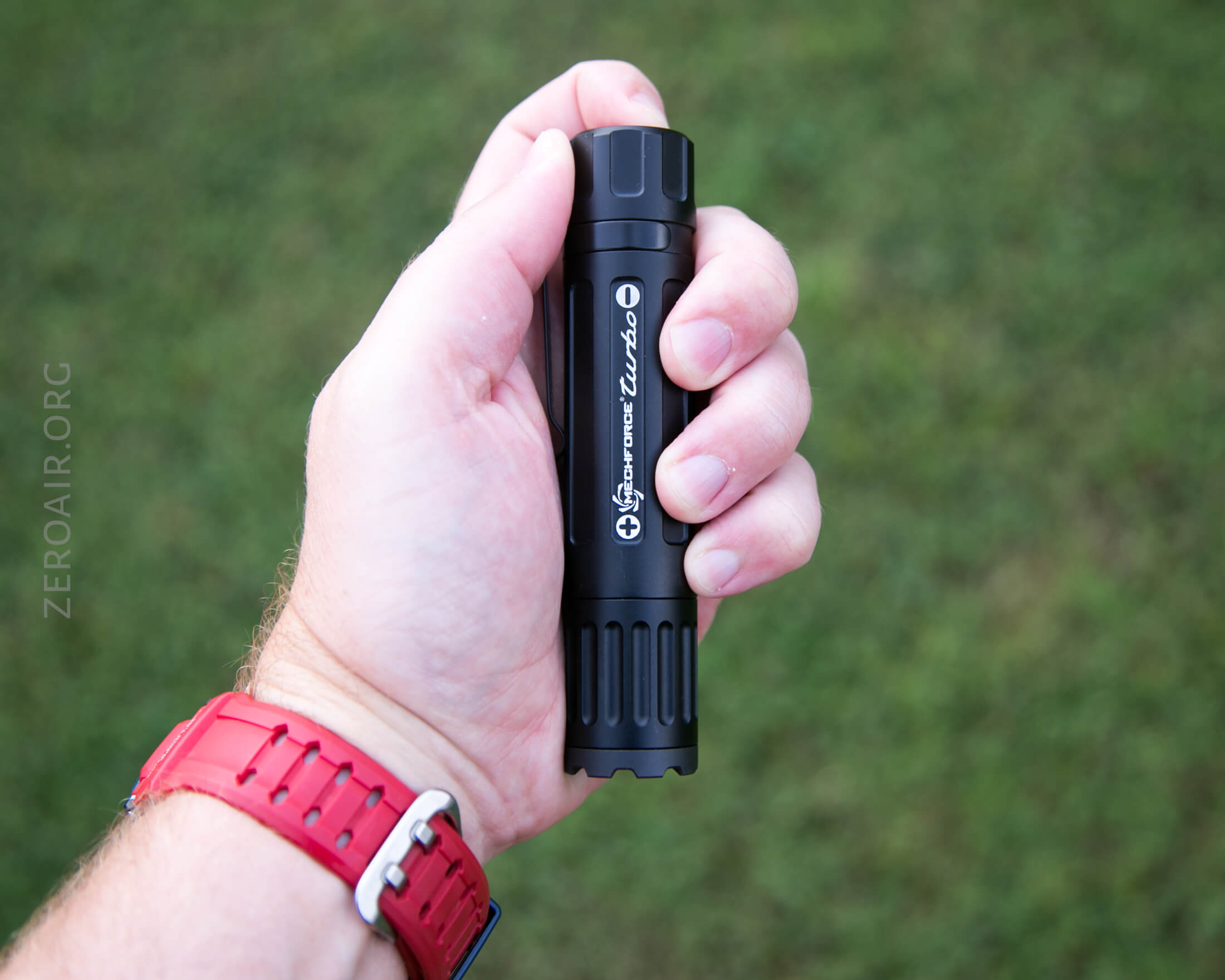

A size comparison you had to be wondering about:

My Mechtorch left, below, has a dragon driver. That's why it looks different (and has no glow).





Retention and Carry
The intended way to carry this light is a friction fit pocket clip. The light is big enough that the 20mm that stick over the clip don't unbalance the light. I can carry it fairly comfortably in my back pocket, though the bezel doesn't help in this regard.
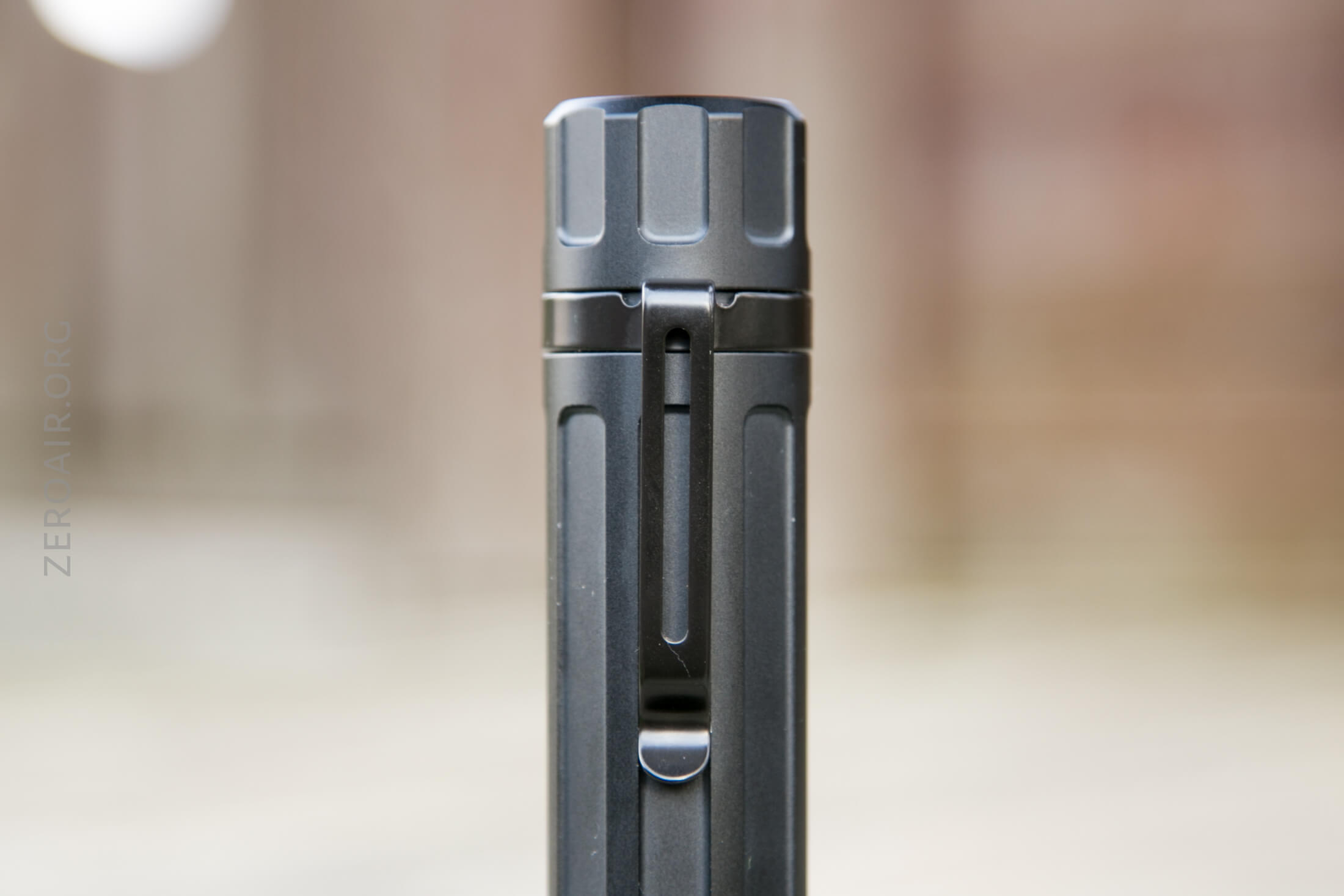

Power and Runtime

Mechforce includes the right cell for this light – a 5000mAh 21700. It's an Efest, and while I haven't had the best luck with Efest, all the ones I've gotten from Mechforce have been great.
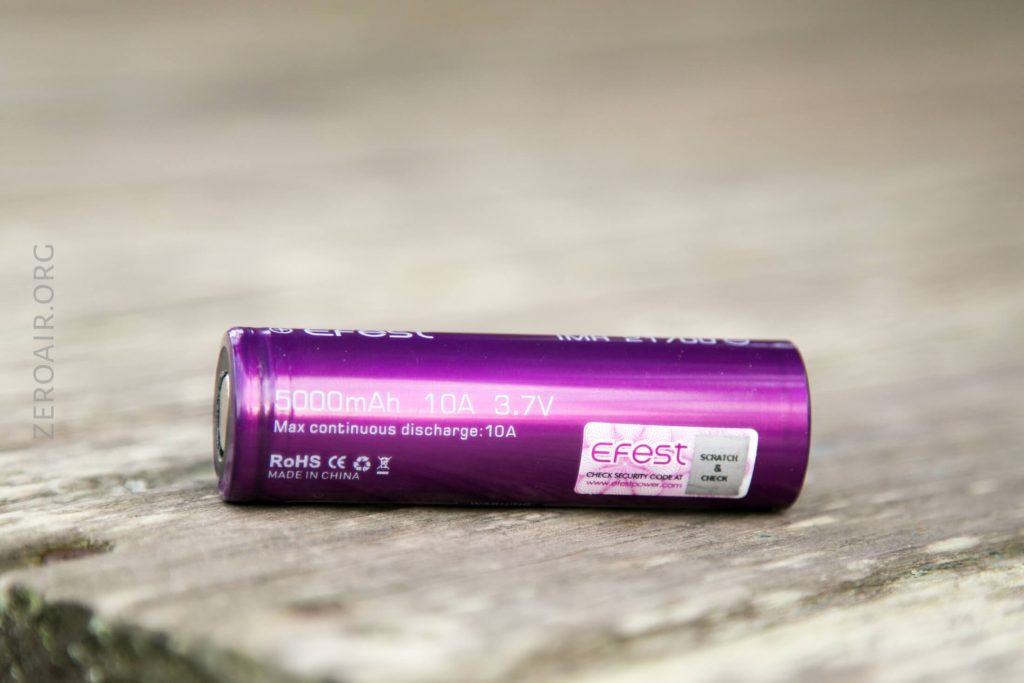


It's a flat top unprotected cell.
The body of the light has a cell orientation but the cell goes into this light in the common way – positive toward head. Note below that this light is different in that the head screws into the body. That was also a feature of the Mechtorch, though if memory serves, this is a bit different still.

Here's a runtime on Turbo. H17f is a FET driver, so it'll take all the current a cell can provide. (On bench power it gladly took 10A without blinking.) But turbo output drops off quickly, too. In fact it's basically a steady decline until settling at around 600 lumens. Then when voltage gets low, the output steps down. There is LVP, which hits at about 2.7V.

High output (which by default is the only other steady output) is around 400 lumens. Output here is fantastically stable for nearly the whole runtime.

Modes and Currents
| Mode | Mode Claimed Output (lm) | Claimed Runtime | Measured Lumens | Tailcap Amps |
|---|---|---|---|---|
| Turbo | – | – | 1641 | >10 [FET] |
| High | – | – | 397 | 1.47 |
This is an h17f, so we already know it uses PWM. I don't notice it while using the light though, so you probably won't either.

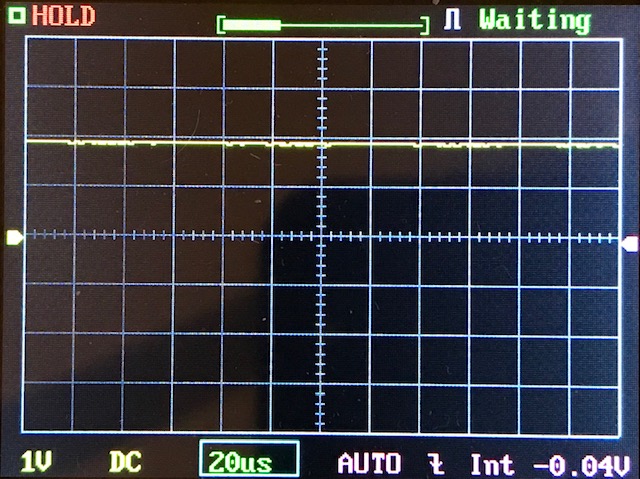
For reference, here's a baseline shot, with all the room lights off and almost nothing hitting the sensor. And here's the worst PWM light I have ever owned. Also one of the very first lights I ordered directly from China!
User Interface and Operation
The Tactical Suppressor has a mechanical switch. In this case it's a forward clicky (as it should be) and it's covered with a silicone boot with the Mechforce logo (which I love, for whatever reason – very well done).

Here's a UI table!
| State | Action | Result |
|---|---|---|
| Off | Click | High |
| Off | Press | Momentary High |
| Off | Press Click* | High then Turbo |
| Off | Double Press* | Strobe |
| On | Click | Off |
| On | Press | Nothing |
| Off | Press Press | High then Momentary Turbo |
Here's a flow chart I made for programming the H17f in the forward clicky format.

LED and Beam
The emitters in this triple are Nichia Natural White 219CT 5700K LEDs mounted on copper PCB. The optic is a Carclo 10507 LED Optic.



These beamshots are always with the following settings: f8, ISO100, 0.3s shutter, and manual 5000K exposure.
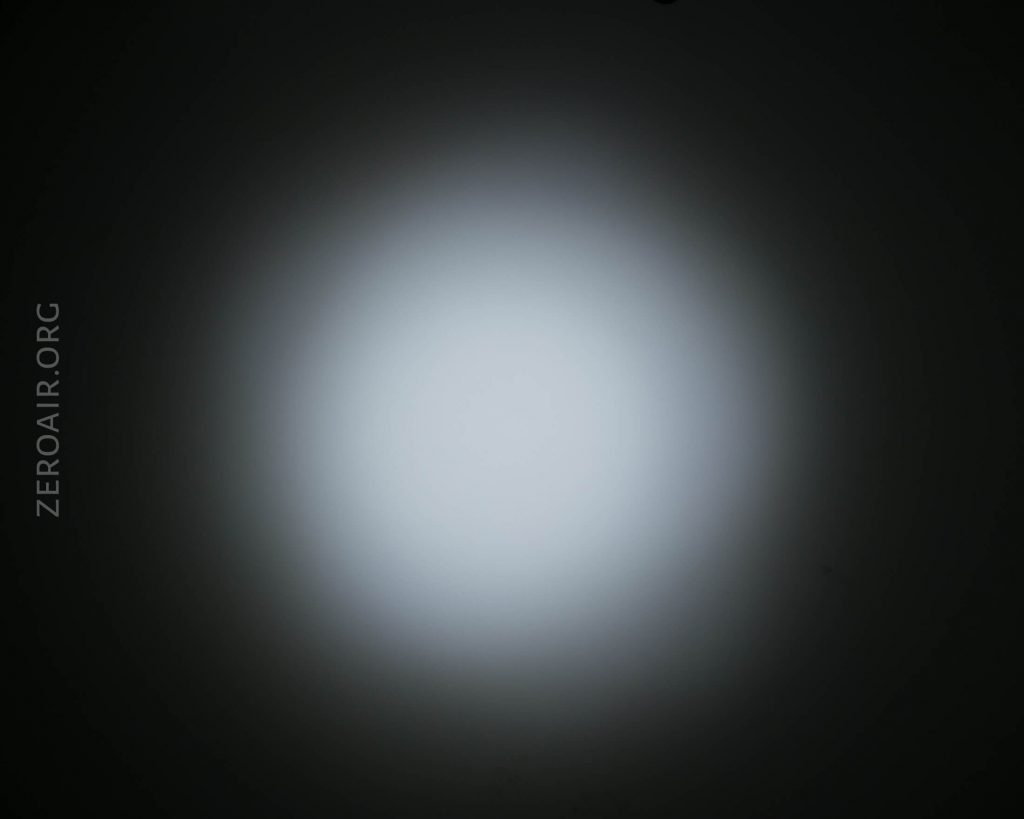

Tint vs BLF-348 (Killzone 219b version)
The beam is nice and white – I consider the 219c to be the most "stark white" emitter I see very often.


I compare everything to the Killzone 219b BLF-348, because it's inexpensive and has the best tint!
Conclusion
What I like
- Well built
- Nice package that includes cell
- Relatively low cost of entry for a h17f and being made by this manufacturer
- Tail stands easily
- Light escapes when head standing.
- Not possible to remove crenelated bezel
- Clicky is a bit recessed for easy access with gloves, for example
- Stock programming on the Turbo is very specific – plan to reprogram
- Stock programming modes aren't mentioned in docs specifically and I don't know of a way to reflash to stock
Notes
- This light was provided by MechForce for review. I was not paid to write this review.
- This content originally appeared at zeroair.org. Please visit there for the best experience!

